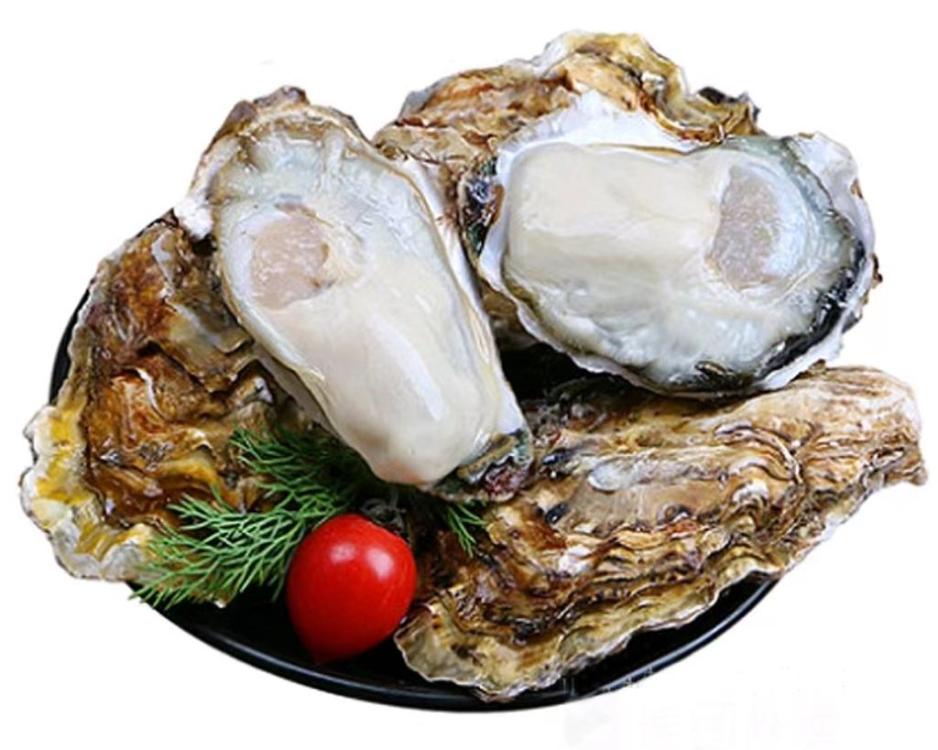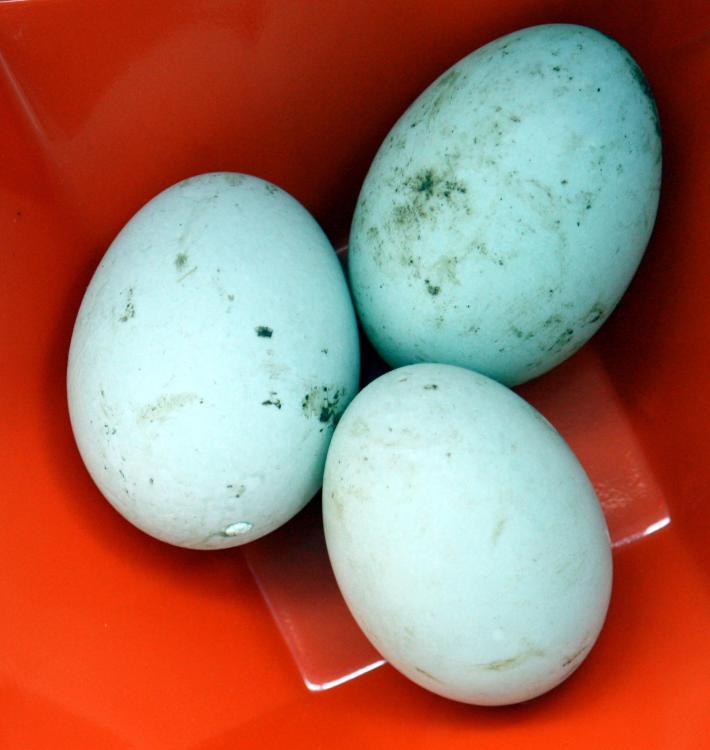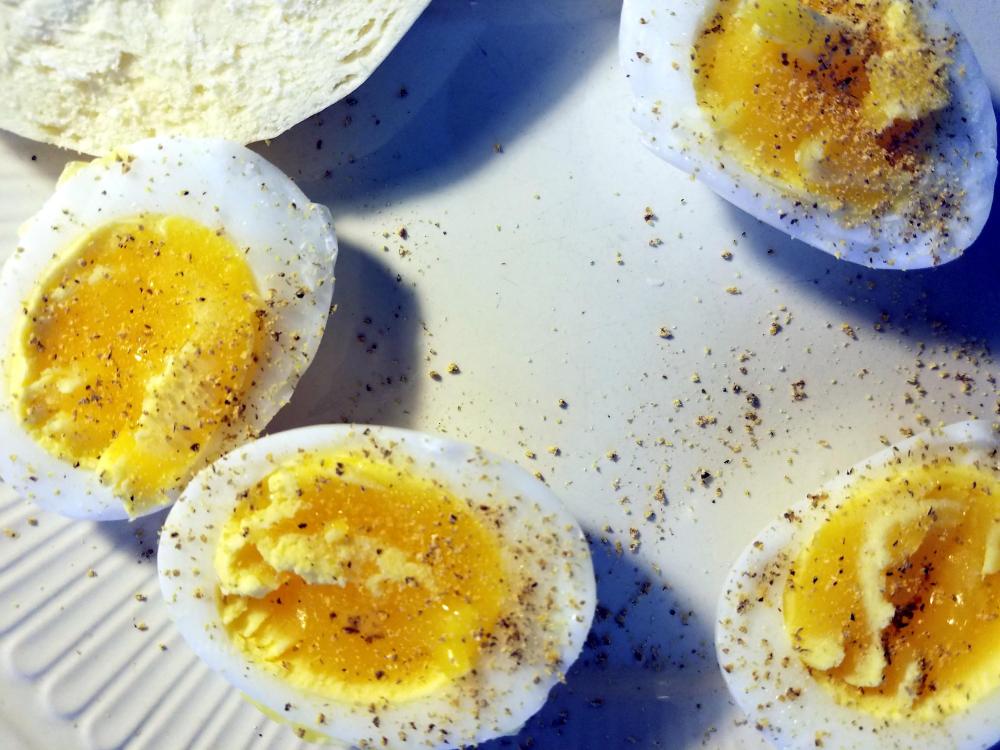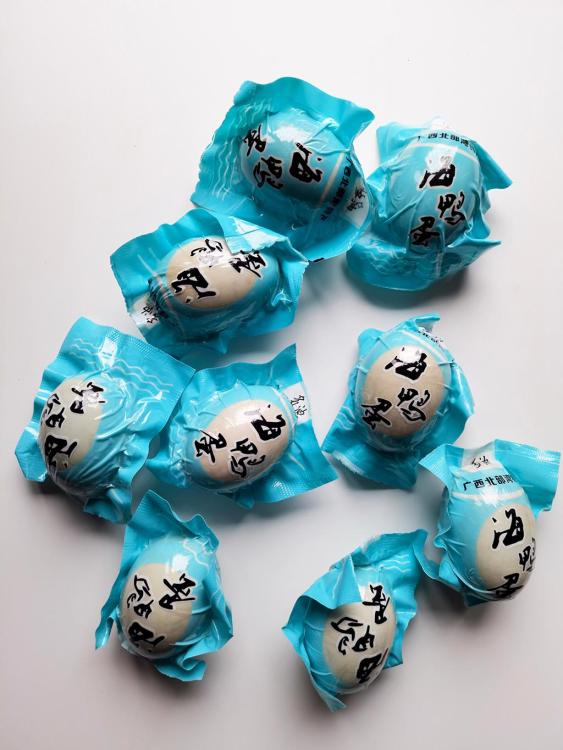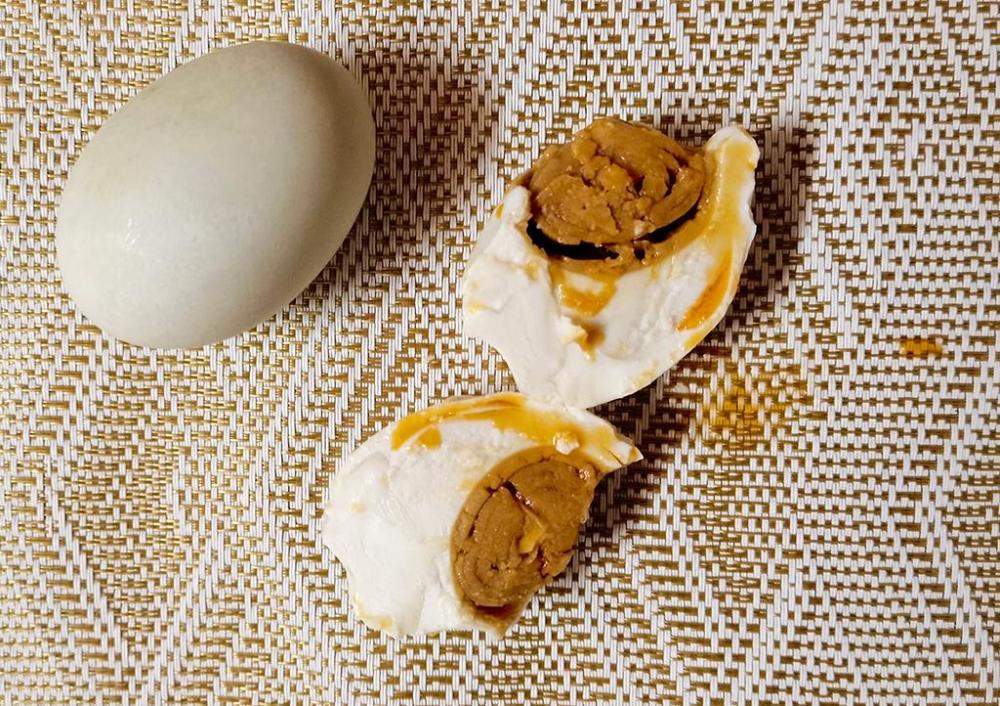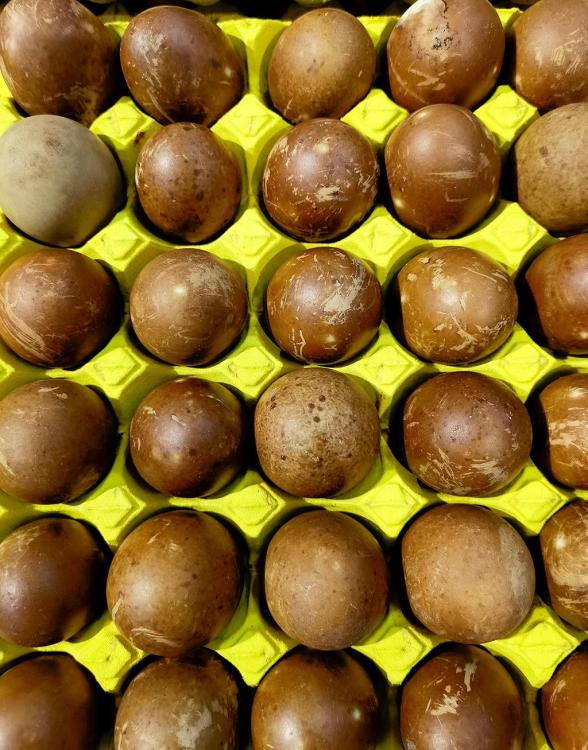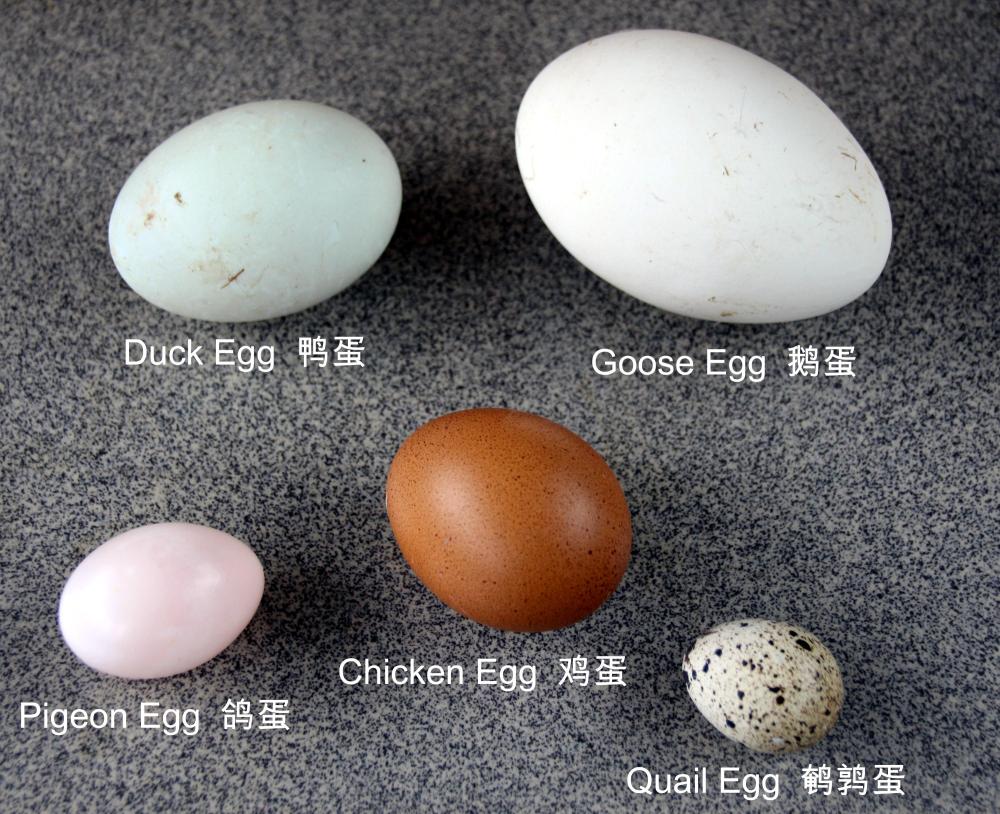44. 钦州海鸭蛋 (qīn zhōu hǎi yā dàn)
When they are not busy waxing apples and skinning cucumbers as mentioned here, the people of 钦州 (qīn zhōu) are more occupied with raising oysters. In fact, the city is known as China’s oyster capital. Raised on ropes in Qinzhou’s natural harbour of the 135 square kilometre / 52 square mile, 茅尾海岛 (máo wěi hǎi dǎo), Maoweihai Island which forms the largest oyster breeding base in south China. A few years ago, they sold around 32,000 pounds of oysters a day, but now that has risen to 100s of thousands and is still rising. Regular oysters are a year old, but they also raise some for up to two and a half years by which time they are a man’s palm size or larger. Qinzhou oysters are noted for their pure white flesh. While you're in the area you may get sight of the rare white dolphins that live in the off-lying waters.
Qinzhou Oysters
But I’ve already talked about Guangxi and oysters. This time I want to mention something different which I’ve been buying regularly for years. Qinzhou’s mangroves are home to a variety of free-range sea ducks. Their eggs are larger than the average duck egg, ranging up to 80 grams each as opposed to the 60 to 70 which is more common. They are also richly flavoured with deep yellow yolks.
Newly gathered sea duck eggs
These are often in my breakfast boiled, fried or scrambled. make good omelettes, too
Boiled Sea Duck Eggs
The eggs are sold fresh as well as being salted by steeping in salt water for between 30 and 50 days. Method here.
Salted Sea Duck Eggs
Qinzhou Salted Sea Duck Eggs
In addition, the eggs are made into a type of century egg and are marinated in a red mud then roasted.
Red Mud Roasted Sea Duck Eggs
I mainly buy the fresh eggs, but have happily tried all varieties. Incidentally, supermarkets and markets here routinely carry a much wider range of eggs than I was used to in the west. In descending order of size, goose (鹅蛋 - é dàn), duck (鸭蛋 -yā dàn), chicken (鸡蛋 -jī dàn), pigeon (鸽蛋 - gē dàn) and quail (鹌鹑蛋 - ān chún dàn). I very occasionally see ostrich eggs (驼蛋 - tuó dàn).
My favourite egg dish (with duck or chicken eggs) is scrambled eggs with Tonkin jasmine. I can hear some of you asking "What's that?
Tonkin jasmine (Telosma cordata) goes under many names such as pakalana vine, Tonkinese creeper, Chinese violet, cowslip creeper, telosoma etc. In Chinese it is 夜香花 - yè xiāng huā or 夜来香 - yè lái xiāng.
It is a flowering plant native to Guangdong and Guangxi of China and also cultivated in Vietnam (on the Gulf of Tonkin, hence the name.)
It has a delicate lemony scent and is used in both southern Chinese and Vietnamese cuisine (where it is known as bông thiên lý.)
It is usually stir fried, often with eggs, with which it has a particular affinity, or is boiled in soups, often with fish. It is also added to many noodle dishes in Vietnam.


